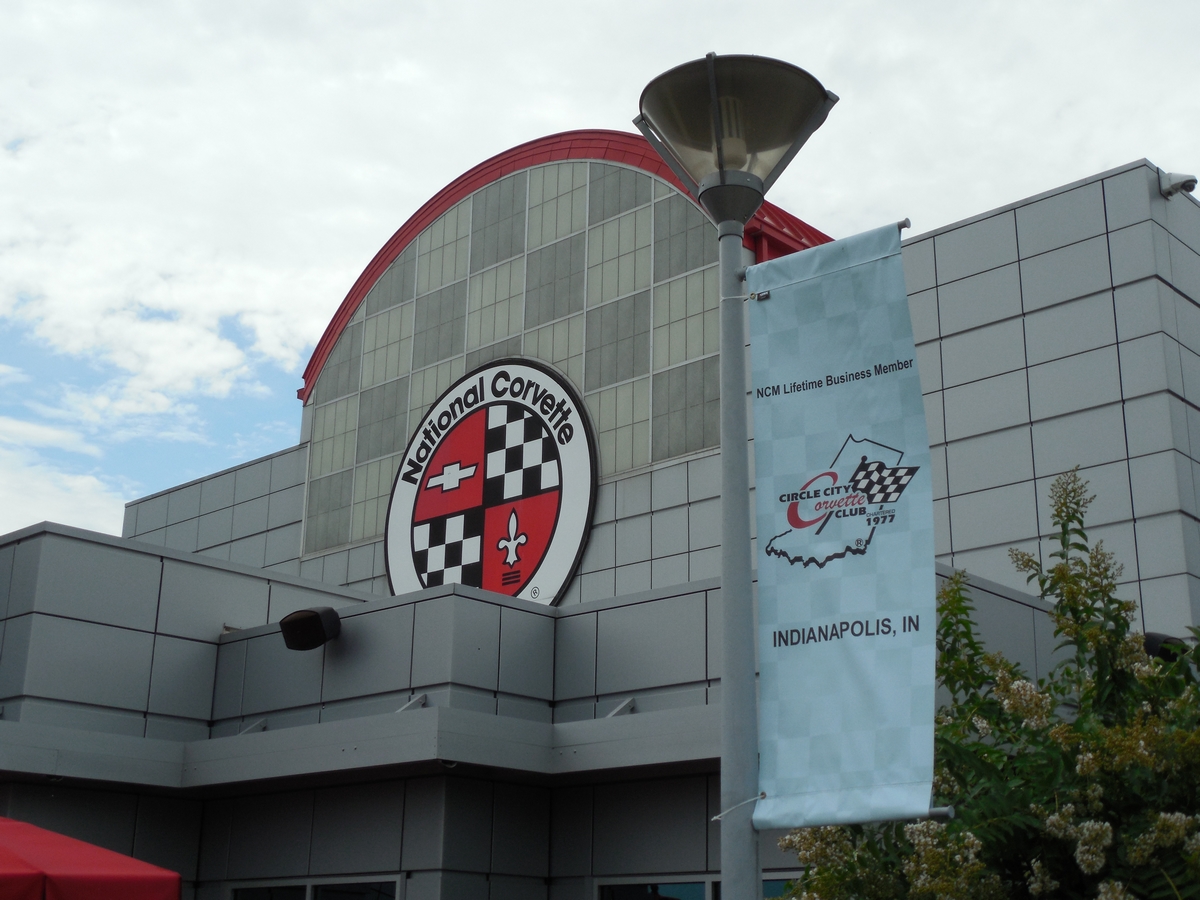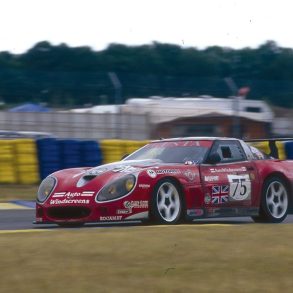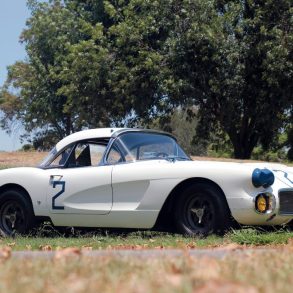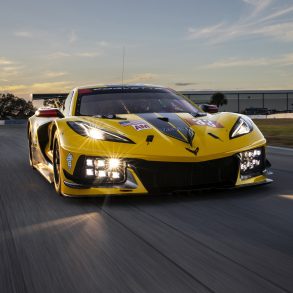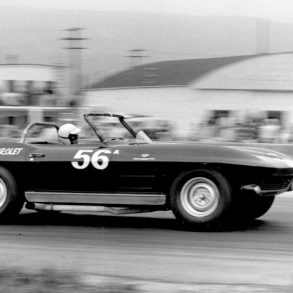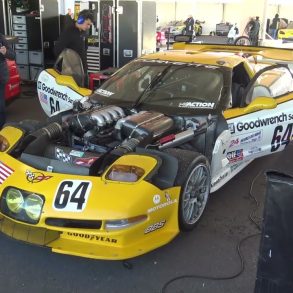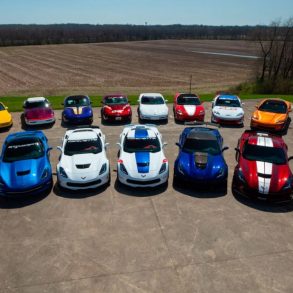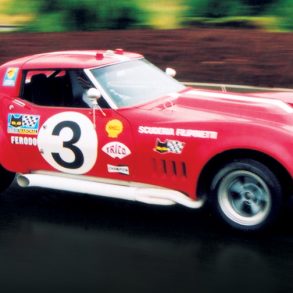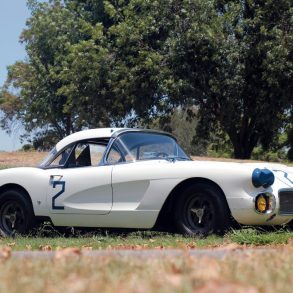The National Corvette Museum Celebrates the Legacy of Chevrolet Racing Over the Past 100+ Years
On Sunday, July 15, 2018, I made one my many regular pilgrimages to the National Corvette Museum in Bowling Green, Kentucky. As I have been a member of the NCM for many years and a die-hard Corvette fanatic my entire life, I hardly need a reason to go visit the NCM. For this trip however, I actually had a very good reason for going. I wanted to get the inside scoop on the Museum’s latest exhibit – “Chevrolet Racing: From Louis to Le Mans.”
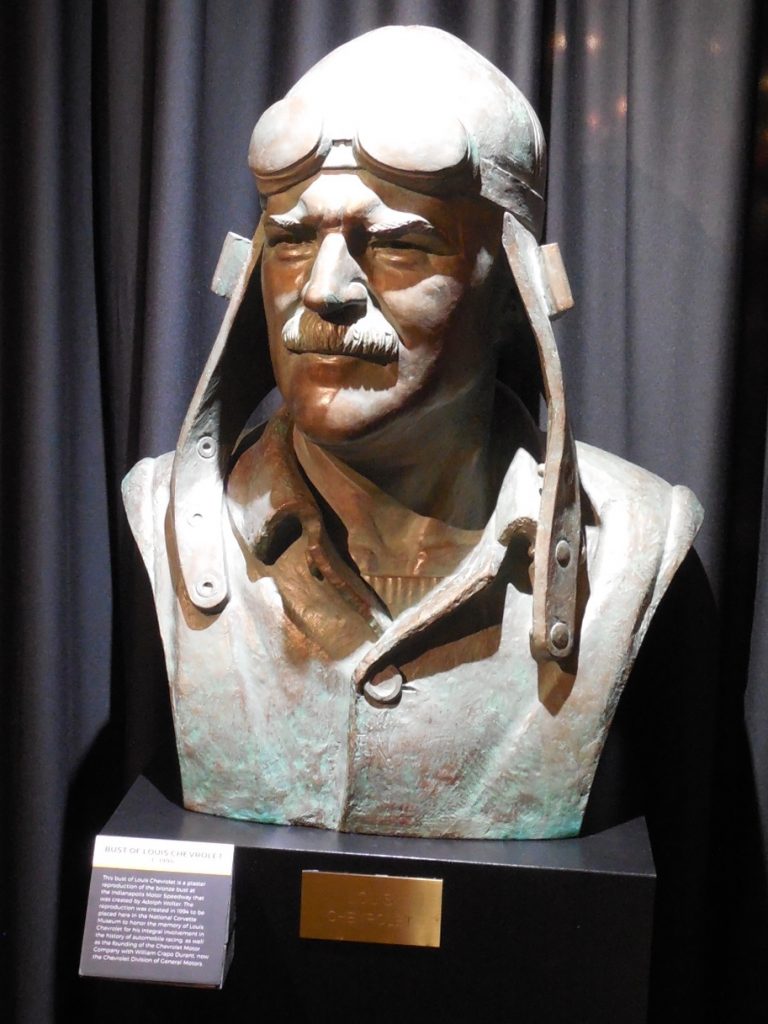
As they’ve done in the past, the museum is once more hosting a special-themed exhibit from June 11, 2018 to January 4, 2019. This exhibit’s theme focuses on Chevrolet’s remarkable racing history and the legacy of its founder (and racing aficionado), Louis Chevrolet.
The display literally transports guests back to the early twentieth century where a young Louis Chevrolet, with his successful career as a race car driver for Buick behind him, founded the Chevrolet Motor Company. As guests enter the exhibit hall, they are greeted by a bust of Louis Chevrolet, dressed in his racing regalia.
It also pays homage to some of the amazing drivers and cars that were part of the Chevrolet racing program in the early days of racing along with a tribute to several of the cars that competed – and found victory – in the 24 Hours of Le Mans.
What follows is a brief glimpse at some of the many amazing cars featured in this exhibit.
Highlights From the Exhibit “Louis to Le Mans”
The 1909 Buick Model 16 “Indy Racer”
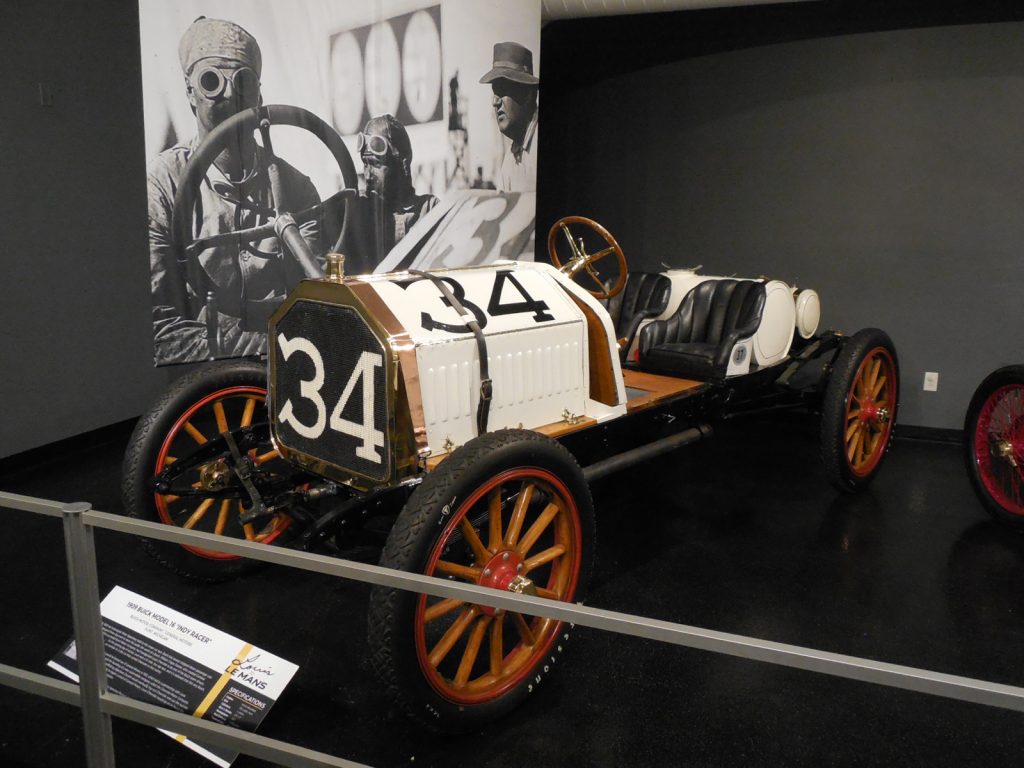
On August 19, 1909, the Indianapolis Motor Speedway hosted its first-ever motor car race. Intent on competing in the inaugural event, Buick had stripped down several of their passenger cars to compete in the three day event.
William Crapo Durant, who had founded General Motors in 1907 from the already successful Buick Motor Company, had handpicked Louis Chevrolet to be one of the Buick team drivers.
On the opening day of racing at the Indianapolis Motor Speedway, Louis won a 10-mile, four lap race. It is believed that this 1909 Buick Model 16, car number 34 (the very car that is currently on display at the NCM (right)) is the very same car that carried Chevrolet to that early victory.
1915 Cornelian (Recreation)
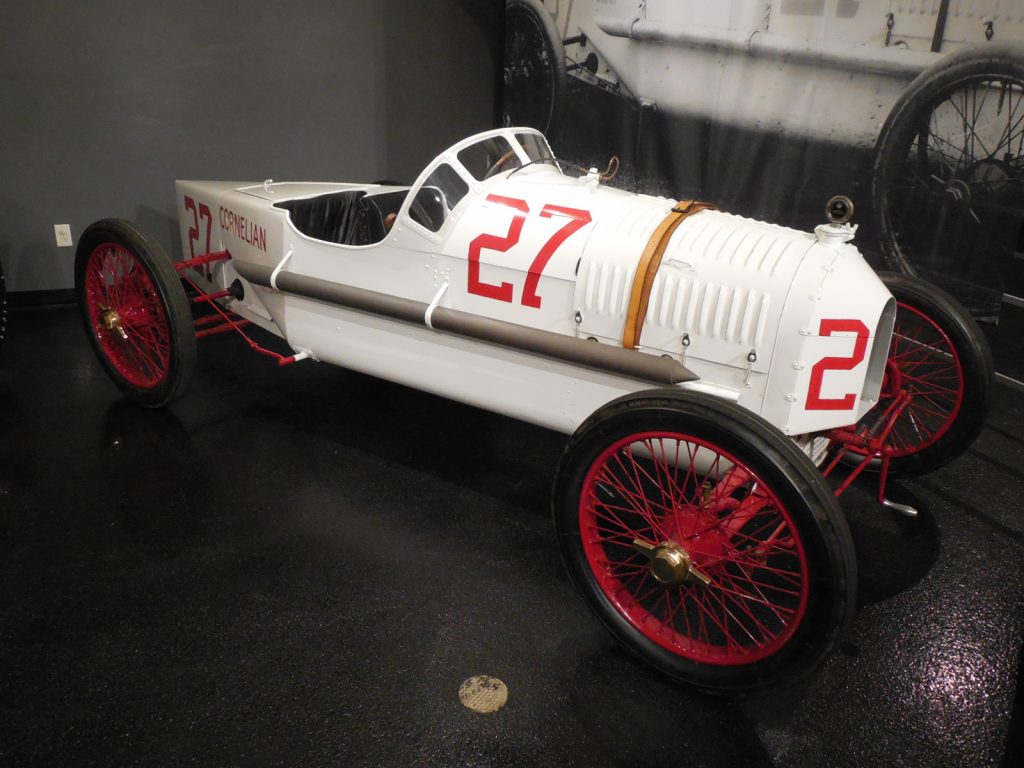
Originally introduced at the New York Automobile Show in January, 1914, the Cornelian is considered one of the greatest American cyclecars ever built.
The car was manufactured by Howard E. Blood of the Blood Brothers Machine Company, and was met with a great deal of enthusiasm by the evolving racing community.
In 1915, the Blood Brothers decided to enter one of their Cornelian cyclecars into the relatively new “Indianapolis 500” race. They recognized that this would be a major undertaking for the company and so they sought an experienced driver – Louis Chevrolet – to aid them in bringing the Cornelian to Indianapolis.
Louis assisted the company in modifying the Cornelian into a sleek race car with a custom nose, custom monocoque (the first of its kind in racing), and four-wheel independent suspension. Louis later took the Cornelian to Indianapolis, where he qualified for the race at a speed of 81.2 miles per hour. Unfortunately, the car’s intake valve failed in the engine, forcing Louis to retire the car during the 77th lap of the race.
To this very day, the Cornelian remains the smallest car that has ever raced at the Indianapolis 500.
The 1957 Chevrolet 150 “Black Widow” NASCAR
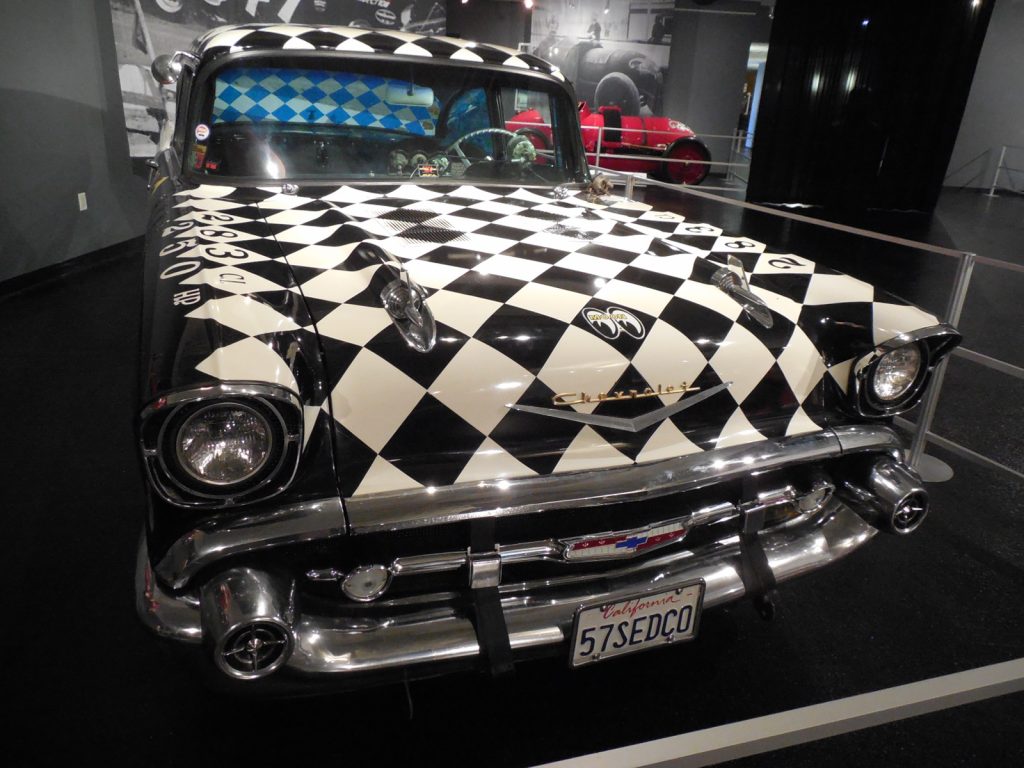
In 1955, a tragic accident at the 24 Hours of Le Mans resulted in the start of a ban on manufacturer-backed racing programs. The ban, which was sanctioned by the Automobile Manufacturers Association (AMA), began in 1957.
For its part, General Motors agreed to participate in the ban. Despite this, GM executives knew that racing was still an important factor in proving a vehicle’s capability and value. They therefore hired Vince Piggins, former lead race engineer for Hudson, to begin the Southern Engineering and Development Company (SEDCO) in Atlanta, Georgia.
Shortly after the founding of SEDCO, Piggins and his team brought in a number of 1957 Chevrolet One-Fifty Utility Sedans with a custom specifications sheet that had been signed off by Ed Cole. These custom Chevrolet 150’s would be developed by SEDCO for use in both NASCAR racing and drag racing.
Dubbed “Black Widow,” these cars were so successful that they were deemed a major factor in NASCAR’s decision to band fuel-injected engines, a rule which remained in place until 2011.
The 1989 Chevrolet Corvette ZR-1 “World Record Corvette”
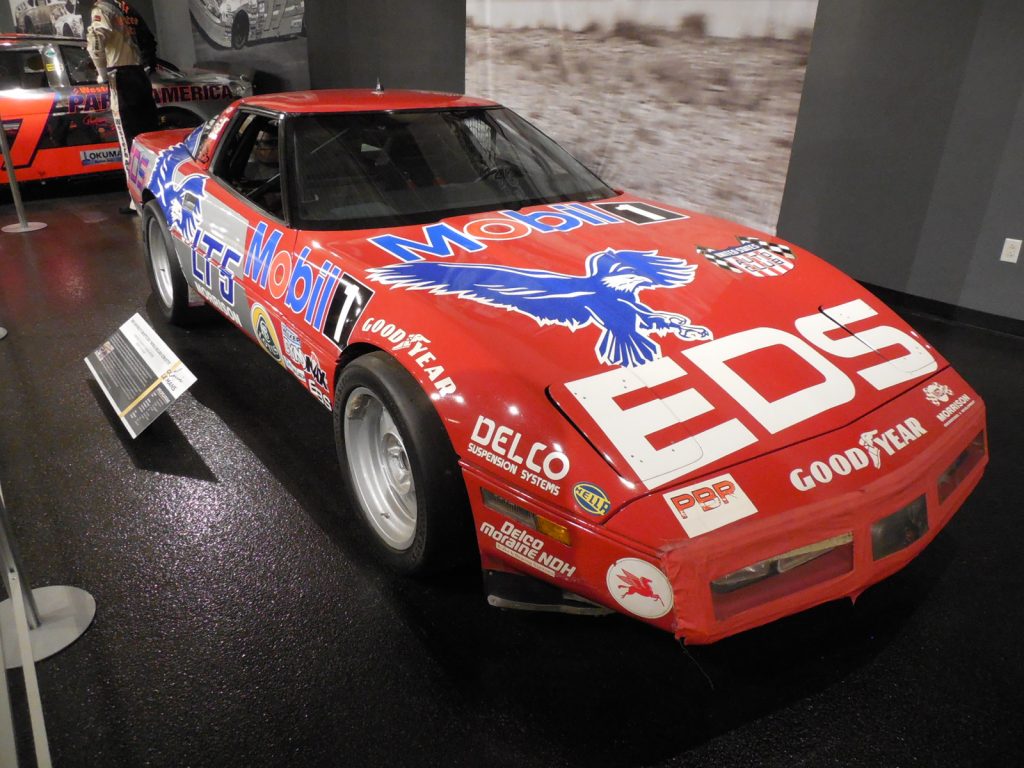
In 1989, race car drivers John Heinricy and Stu Hayner discussed the possibility of breaking the 24-hour world speed endurance record set by Ab Jenkins in 1940. They brought the idea to Tommy Morrison of Morrison Motorsports and in turn, Morrison brought the idea to GM Engineer Jim Minniker. Morrison convinced Minniker that they could achieve this goal given the advancements in technology that were being pioneered by the Corvette/Lotus engine program. However, there were many at General Motors who believed that the plan would fail, so the attempt was cloaked in secrecy.
On March 1, 1990, at 9:56am, this ZR-1 (left) and an L98 powered Corvette took to the 7.712-mile racetrack at the Firestone Test Center in Fort Stockton, Texas. Over the next twenty-four hours, facing rain, sleet, and even some mild snowfall, the drivers of the Corvette ZR-1 remained fearless as they piloted the powerful race car into history.
At 9:56am on March 2, Ab Jenkins 24-hour would record fell to the Corvette ZR-1. The car ran the full 24 hours averaging a speed of 175.885 miles per hour. It also set a new world record of 5,000 km and 5,000 mile average top speeds, proving itself to be the “King of the Hill,” a distinction that has been synonymous with the Corvette ZR-1 ever since!
The Chevrolet Corvette C6.R GT1 Test Car
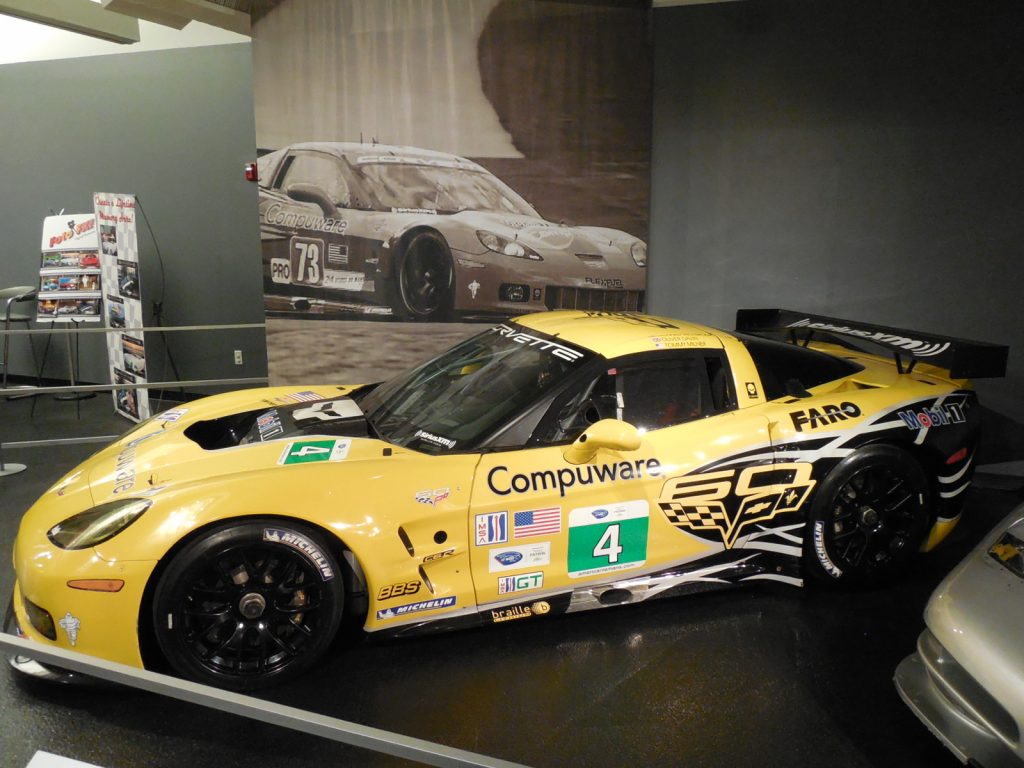
For anyone that has ever owned a sixth-generation Corvette, this final exhibit is sure to impress.
Unlike the development of the C5.R Corvette Race Cars, which took place well after the engineering process had been completed on the production model, the C6.R Corvette race cars were engineered in conjunction with the road cars. The result of this evolution mean that the road cars would benefit from the engineering standards developed for the race cars. It also meant that they’d receive much of the same technology packaged into the race car variant.
More than that, the simultaneous evolution of both cars made it easier to have a more advanced race car that met homologation standards.
During the C6 era of the Corvette, there were two different versions of the C6.R – the GT1 and the GT2.
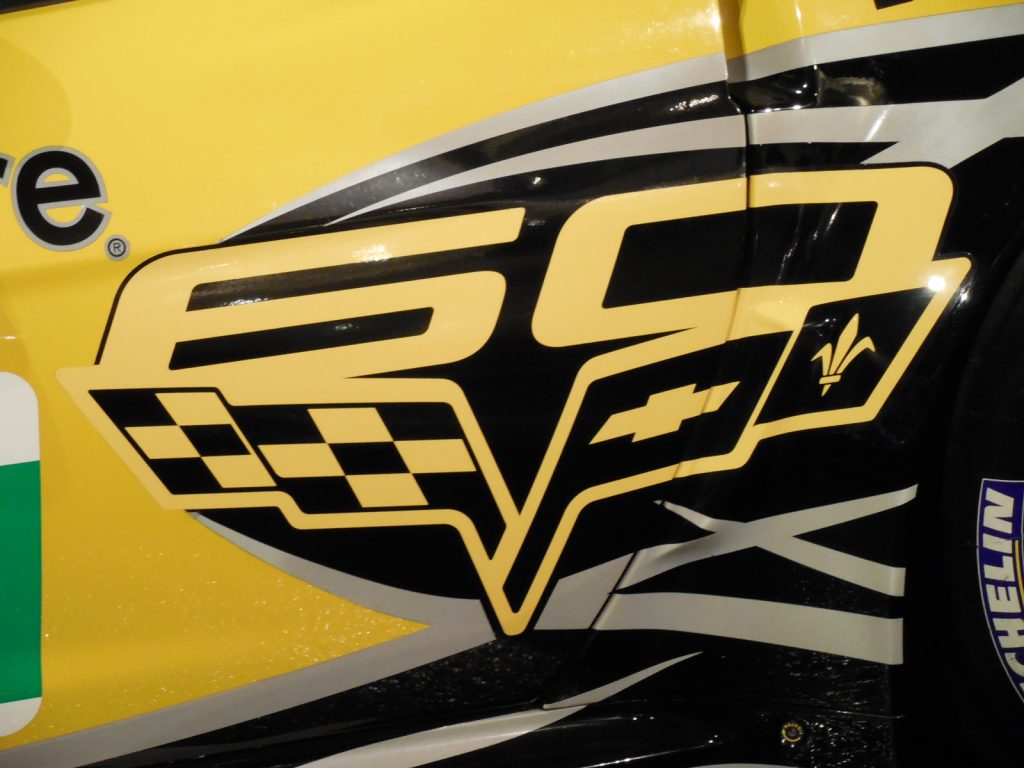
This GT1 Test Car represents the version of the C6.R that took class wins at the 24 Hours of Le Mans in 2005, 2006 and 2009. The GT1 Corvette was so successful that, over time, every other competitor dropped out of that class. As a result of their dominance in class, the C6.R Corvette was forced to enter into the GT2 class in 2011. That same year, the C6.R Corvette won its class at Le Mans once again.
For anyone keeping score, the GT1 version of the C6.R Corvette Race Car produced 590 horsepower, had carbon ceramic brakes, and aggressive aerodynamics. Comparatively, the GT2 cars were far more similar to the production Corvettes, utilizing stock aerodynamics, iron brakes and a 470 horsepower engine.
Although this particular C6.R never saw an actual race track, it clearly demonstrates the power and might of the Corvette Racing program. For anyone that was fortunate enough to see/hear its counterparts compete on race day (at Daytona, Road Atlanta or elsewhere), there was no mistaking the incredible power of the Chevrolet powerplant beneath its hood, or identifying with the brilliant black-and-yellow paint scheme which remains a staple of the Corvette Racing program to this very day.


